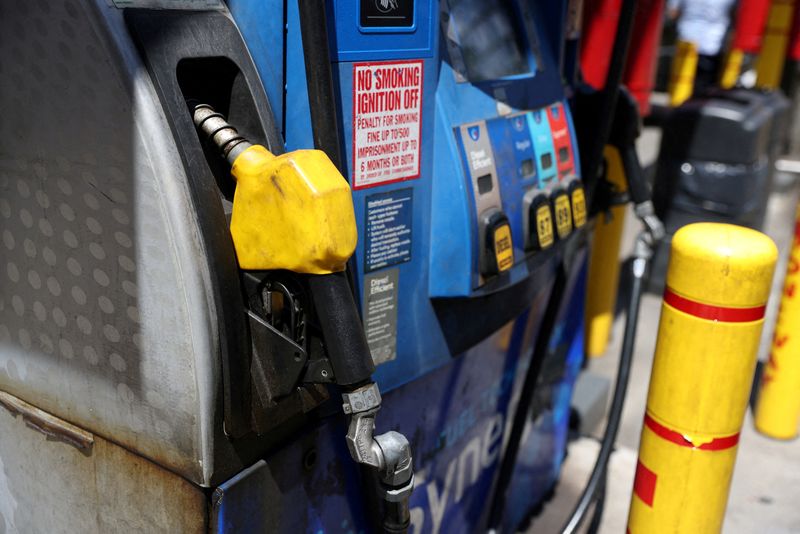By Shariq Khan
NEW YORK (Reuters) - U.S. gasoline and diesel demand are at their weakest seasonal level since the 2020 coronavirus pandemic, data from the Energy Information Administration showed on Wednesday, pulling refiners' margins for making the products to multi-month lows.
The 4-week average demand for gasoline stood at 8.63 million barrels per day (bpd) in the week ended May 3, the lowest reading for the start of May since 2020 when the coronavirus pandemic decimated demand for transportation fuels.
Four-week average demand for distillate fuels, which includes diesel and heating oil, stood at 3.60 million bpd, also the weakest seasonal level since the pandemic, according to the EIA.
Some analysts have said the weakening demand for these products could be an indicator of stagnating economic activity, while others say it highlights a growing share of renewable fuels replacing conventional fossil fuels.
"The gasoline situation was going to be looked at by everybody and it definitely disappointed," Mizuho analyst Robert Yawger said. "If that's indicative of the performance of the economy, that's bad all around."
The drop in demand is weighing on refining margins, threatening to upend two years of bumper profits.
The U.S. 3-2-1 spread, a key measure of overall refining margins, traded below $26.50 a barrel on Wednesday for the first time since February. That spread has not traded this low at the start of May since 2021.
Similarly, the spread between U.S. gasoline futures and U.S. crude oil also narrowed to its weakest since February on Friday. The diesel crack spread traded at a one year low of around $23 a barrel earlier this month.

Softer demand comes as U.S. gasoline stocks and distillate stocks rose last week, surprising analysts who on average predicted lower stocks in a Reuters poll.
Gasoline stocks rose by 915,000 barrels to 228 million barrels last week, the highest seasonal level since 2021. Distillate fuel oil stocks rose by 560,000 barrels to 116.4 million barrels in the week ended May 3, also the highest seasonal level in three years.